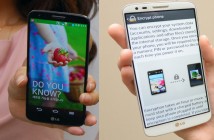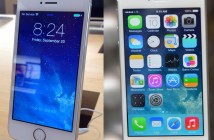
Sony Xperia Z Ultra vs Samsung Galaxy Mega 6.3
But now the companies are back in full force, with Samsung being the de facto leader when it comes to Android devices, and Sony being the luxury brand that sells their devices at a premium and focuses on style more than anything else. One niche where the two companies have just become competitors is phablets, or smartphones with large displays if you wish.

Sony Xperia Z Ultra specs
Design
Design is a very subjective preference, and both the Sony Xperia Z Ultra and the Samsung Galaxy Mega 6.3 look and feel great, but I have to say that the Xperia Z Ultra is more attractive. The reason is that it’s got a very unique sleek design, with a thin metal frame sandwiched between two sheets of glass. The Galaxy Mega 6.3 wasn’t hit with the ugly stick, but it looks just like the other half dozen smartphones that Samsung released this year, only bigger. The Mega 6.3 loses points on the feel, too – it’s plastic on the back and sides, and while it’s sturdy, the glass/metal combo on the Xperia Z Ultra is just better.
That being said, the Galaxy Mega 6.3 does have an advantage in that it’s smaller while still having (almost) the same screen size and even dedicated navigation buttons. The reason for that is the narrow bezel, and even though it’s thicker at 8mm (vs 6.5mm), it’s more pocketable and useable than the Xperia Z Ultra, which is a whole 11.7mm longer and 4.2mm wider.
The Xperia Z Ultra is dust and water proof, but it’s not actually a rugged phone – you’re just as likely to crack it as the Galaxy Mega 6.3, but it may survive longer if you use it outside a lot.

Sony Xperia Z Ultra rear camera
Hardware features and performance
Hardware wise, the Sony Xperia Z Ultra wins on a lot of points. It’s got a TFT 6.4 inch display with a 1920×1080 pixel resolution that looks almost like an IPS panel thanks to Sony’s Triluminos and BRAVIA X-Reality Engine technologies. It also uses Qualcomm’s most powerful platform to date – the Snapdragon 800 with 4 processor cores running at 2.2 GHz, 2 GB of RAM and the Adreno 330 GPU.
In comparison, the Samsung Galaxy Mega 6.3 has a 6.3 inch Super Clear LCD with a 1280×720 pixel resolution that is slightly below Sony’s panel in color, contrast and viewing angles – it’s great, but not excellent. For processing power, the Mega 6.3 uses the entry level Snapdragon 400, with two processor cores running at 1.7 GHz, 1.5 GB of RAM and the Adreno 305 GPU.
The rest of the features are more or less the same: 16 GB of onboard storage space plus a micro SD card slot (there’s also an 8 GB version of the Mega 6.3), an 8.0/2.0 Megapixels camera combo, Wifi N, Bluetooth 4.0, GPS/GLONASS, HSPA+ 3G (42 Mbps on the Xperia vs 21 Mbps on the Mega), 4G LTE (150 Mbps download on the Xperia vs 100 Mbps on the Mega), HDMI out and NFC.
The Galaxy Mega 6.3 has a couple of advantages – it’s got an LED flash on the back (the Xperia Z Ultra does not, which is rather strange), an infrared transmitter (useful for all your home electronics) and a larger 3200 mAh (vs 3050 mAh on the Z Ultra) battery that should last longer on account of the halved processor cores and display resolution.
I’m a sucker for quad cores, fast data and beautiful screens and don’t care much for the LED flash or infrared beamer, so my vote here goes to the Xperia Z Ultra.
Technical specifications
| Specifications | Sony Xperia Z Ultra | Samsung Galaxy Mega 6.3 |
|---|---|---|
| Display | 6.4 inches, 1920×1080 pixels, TFT LCD with Triluminos and BRAVIA X-Reality Engine, 344 PPI pixel density | 6.3 inches, 1280×720 pixels, Super Clear LCD, 233 PPI pixel density |
| Processor | Qualcomm Snapdragon 800, 2.2 GHz, quad core | Qualcomm Snapdragon 400, 1.7 GHz, dual core |
| RAM | 2048 MB | 1536 MB |
| Graphics Adapter | Adreno 330 | Adreno 305 |
| Storage Space | 16 Gb onboard storage space, micro SD card slot (up to 64 Gb cards supported) | 8/16 Gb built in storage space, micro SD card slot (up to 64 GB cards supported) |
| Camera(s) | Back: 8 Megapixels with support for 1080p video recording and image stabilization; Front: 2.0 Megapixels with support for 1080p video recording | Back: 8 Megapixels with support for 1080p video recording; Front: 2.0 Megapixels with support for 720p video recording |
| Connectivity Options | Wifi N, Bluetooth 4.0, NFC, micro USB, HDMI out, HSPA+ 42/5.76 Mbps, 4G LTE 150/50 Mbps, GPS/GLONASS | Wifi N, Bluetooth 4.0, GPS/GLONASS, HSPA+ 21/5.76 Mbps, 4G LTE 100/50 Mbps (select models), NFC, microUSB, HDMI out (via MHL), infrared transmitter |
| Sensors | Gyroscope, accelerometer, magnetometer, light and proximity sensors | Gyroscope, accelerometer, magnetometer, light and proximity sensors |
| Battery | Li-Ion, 3050 mAh, up to 14 hours of continuous use on 3G | Li-Ion, 3200 mAh, up to 10 hours of continuous use on LTE |
| Dimensions and weight | 179.4 x 92.2 x 6.5 mm, 212 grams | 167.7 x 88 x 8 mm, 199 grams |
| Operating System and Software | Android 4.2 Jelly Bean | Android 4.2.2 Jelly Bean |
Software
There’s not a lot to say about the software – both the Sony Xperia Z Ultra and the Samsung Galaxy Mega 6.3 run on Android 4.2.2, although they do use a different set of customizations. Sony has their Timeline UI, which is minimalistic, professional and sleek, while Samsung has the latest Touch Wiz, which is nature themed but still clean and very useable.
Samsung has better pre-installed apps – there’s all the S apps, which offer a lot of great functionality, but in essence you could get the same thing on the Xperia with a few apps from the store. Samsung’s phone is also fully unlocked and easy to mod with third party ROMs, while Sony may be harder to work with in this regard – both phones should be easily rootable and flashable, though.
Software is a tie in my mind – the Xperia Z Ultra looks better, while the Galaxy Mega 6.3 has better pre-installed apps.
Price and Availability
The Samsung Galaxy Mega 6.3 is already available on sale for $459 for the 8 GB model and $499 for the 16 GB model – however that’s for the non-LTE version. If you want LTE, you’ll need to pay $599 for the 16 GB version. The Sony Xperia Z Ultra is set to ship next month, at a price of $759 unlocked – that’s quite a bit more than the LTE model of the Mega 6.3.
I’ll vote for the non-LTE Galaxy Mega 6.3 because it’s a great value. If you want a large screen on your phone, the Mega 6.3 (and other Galaxy Mega phones, for that matter) is a great choice. If you want something more stylish and unique looking, the Xperia Z Ultra is worth waiting for – and if you manage to pocket any of these two, you get rid of the need for a separate phone and tablet.



